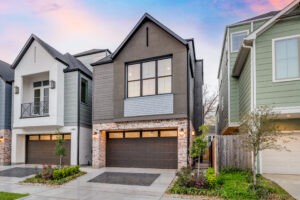Having a House Built On Your Land
Building a house on your own land is an exciting endeavor that offers unparalleled opportunities for personalization and connection to your chosen environment. Beyond the typical considerations of design and construction, there are unique aspects to this process that can significantly enhance your living experience.
Embracing the Natural Landscape
One of the distinct advantages of building on your own land is the ability to harmonize your home with the existing natural features of the site. Instead of altering the landscape to fit a predetermined design, consider adapting your home’s architecture to complement the terrain, mature trees, and natural water features. This approach not only preserves the beauty of your property but can also lead to innovative design solutions that enhance your home’s aesthetic and functional appeal. For example, incorporating large windows to frame picturesque views or designing outdoor living spaces that integrate seamlessly with the surrounding environment can create a profound connection between indoor and outdoor spaces.
 Understanding Local Ecosystems and Environmental Impact
Understanding Local Ecosystems and Environmental Impact
Building on your own land provides an opportunity to become intimately familiar with the local ecosystem. Engaging with environmental consultants to assess the flora and fauna can inform sustainable landscaping choices and help in preserving native species. Additionally, understanding the natural water flow and soil composition can guide decisions on drainage solutions and foundation types, ensuring long-term stability and environmental harmony. By prioritizing eco-friendly building practices, such as using permeable materials for driveways and walkways, you can minimize your ecological footprint and contribute positively to the local environment.
Navigating Zoning Laws and Community Integration
While the freedom to build on your own land is appealing, it’s essential to navigate local zoning laws and building codes diligently. These regulations can influence various aspects of your home’s design, including its size, height, and proximity to property lines. Engaging with local planning authorities early in the process can help identify any restrictions or requirements, such as easements or heritage considerations, that may impact your project. Moreover, understanding the character and values of the surrounding community can guide design choices that foster a sense of belonging and respect for the neighborhood’s aesthetic and cultural context.
Incorporating Future-Proofing and Technological Integration
Building on your own land allows you to incorporate future-proofing strategies and integrate advanced technologies from the outset. Consider designing flexible spaces that can adapt to changing family needs or evolving work-from-home trends. Integrating smart home technologies, such as energy management systems and automated controls for lighting, security, and climate, can enhance convenience and efficiency. Additionally, planning for renewable energy sources, like solar panels or geothermal systems, can reduce long-term operational costs and environmental impact.
Engaging with the Local Community and Resources
Building a home provides an opportunity to engage with local artisans, craftsmen, and suppliers, supporting the local economy and infusing your home with unique, regionally inspired elements. Sourcing materials locally not only reduces transportation costs and environmental impact but also ensures that your home reflects the character and heritage of the area. Furthermore, establishing relationships with neighbors and participating in community activities can enrich your living experience and provide a supportive network as you settle into your new home.
Having a house built on your own land is more than just a construction project; it’s an opportunity to create a living space that is deeply connected to its environment, thoughtfully integrated with the local community, and tailored to your personal lifestyle and future aspirations. By embracing the unique aspects of your property, understanding and respecting local ecosystems and regulations, and incorporating forward-thinking design and technology, you can create a home that is not only functional and beautiful but also sustainable and harmonious with its surroundings. Contact Mazzarino Construction & Development today!
